Palacio Donggung y Estanque Wolji de Gyeongju (경주 동궁과 월지)
16.4Km 2025-04-24
Wonhwa-ro 102, Gyeongju-si, Gyeongsangbuk-do.
Según el libro histórico Samguk Saji, durante el 14to. año del reinado de Munmu (661-681) en el período de Silla (57-935), se construyeron pequeñas montañas y un enorme estanque dentro del palacio Donggung. Además, se plantaron hermosas flores y se introdujeron animales exóticos para crear un encantador ambiente de jardín. El estanque Wolji se encuentra en Wolseung (una fortaleza construida en 101 en el período de Silla). Según una excavación realizada en 1974, las formas esféricas (200 metros de diámetro y 180 metros de alto) indican que había 3 islas dentro del estanque. Gracias a la continua restauración, actualmente se puede ver el estanque Wolji en su original esplendor.
Sitio de la Sala Imhaejeon
Es uno de los palacios apartado del palacio principal de la familia real de Silla. Esta estructura fue utilizada como residencia de los príncipes. Imhaejeon es históricamente la estructura más importante, ya que aparece en muchos libros de historia y también se denomina al área completa como Imhaejin. A través de una excavación, se descubrieron varias estructuras, Hoerang (área de pasillo), el estanque Wolji y cinco torres en la parte oeste. Algunas áreas han sido restauradas mientras que otras fueron mantenidas en su estado natural, dejando las piedras a la vista.
Biblioteca del Milenio de Silla en el Museo Nacional de Gyeongju (국립경주박물관 신라천년서고)
16.4Km 2025-04-29
Inwang-dong 76, Gyeongju-si, Gyeongsangbuk-do
Solar del Palacio Wolseong de Gyeongju (경주 월성(반월성))
16.6Km 2023-01-16
Inwang-dong, Gyeongju-si, Gyeongsangbuk-do.
Este fue el lugar de la fortaleza del palacio durante la dinastía Silla (57 a.C. - 935). El nombre de la fortaleza significa literalmente 'luna creciente encima del monte'.
Los famosos libros de Samgukyusa dicen que el cuarto rey de Silla, Seoktalhae (57 a 80) pensaba que esta área era ideal para la fortaleza y compró la tierra a un noble. El segundo rey Namhae (4 a 24), impresionado por la acción de Seoktalhae, lo acogió como hijo más tarde, convirtiéndolo en el cuarto rey. La zona estuvo entonces bajo mandato de Silla por 900 años, siendo el último rey, Gyeongsun (927 a 935). A pesar de la magnífica grandeza del palacio, ahora es solo un terreno baldío, y según dicen estaba llena de edificios imperiales de la dinastía Silla.
En la actualidad, la zona de Wolseong tiene un congelador hecho de rocas llamado Seokbinggo, un lugar para arquería, un campo de carreras de caballo y un parque infantil, que se asemeja a los terrenos del período Joseon (la dinastía que gobernó en la península coreana desde 1392 a 1910).
Seokbinggo en Gyeongju (경주 석빙고)
16.7Km 2023-02-20
Inwang-dong, Gyeongju-si, Gyeongsangbuk-do.
Seokbinggo significa "congelador hecho en las rocas". Es un refrigerador antiguo de Corea, único en el mundo, y está situado en Gyeongju, la antigua capital del reino de Silla (57 a.C.-935). La apariencia externa de esta maravilla es sumamente humilde y simple. Sin embargo, no se sentirá defraudado una vez se haya asomado a la entrada de este congelador, pues sentirá el frío proveniente del interior de la estructura rocosa. La mitad de Seokbinggo se encuentra en el subsuelo mientras que la otra mitad está por encima del nivel del suelo, demostrando la propensión científica de la gente de Silla. Su piso, paredes y techo están hechas de granito y tiene una entrada de aire. Las paredes están cubiertas de cal para impedir el paso de la humedad y agua. El piso está inclinado para permitir que el hielo derretido fluya fuera de la cabina. Como material aislante, se usó la paja, cuyo poder aislante es altamente eficaz según experimentos realizados por científicos de la actualidad. El hielo conservado en este congelador era una de las delicias preferidas de la clase noble. En los anales históricos se hallaron registros sobre este Seokbinggo y se tienen pruebas de que fue construido, al menos, hace 1.500 años.
Termas Yeongilman (영일만온천)
16.9Km 2025-05-26
Unje-ro 386-beongil 21, Daesong-myeon, Nam-gu, Pohang-si, Gyeongsangbuk-do
El edificio fue construido en 1988 al encontrarse aguas termales mientras se excavaba en el año 1974. Las aguas tienen componentes beneficiosos para la salud, ayudando a prevenir y tratar enfermedades.
Bosque Gyerim de Gyeongju (경주 계림)
17.2Km 2025-08-11
Gyo-dong, Gyeongju-si, Gyeongsangbuk-do.
El bosque Gyerim se encuentra entre el observatorio Cheomseongdae y la fortaleza Wolseong de la ciudad de Gyeongju. El bosque está densamente poblado por antiguas zelkovas y sauces arraigados en suaves colinas y a lo largo del pequeño arroyo en la parte noroeste del bosque. Según la leyenda, el bosque está estrechamente relacionado con los mitos que rodean el nacimiento de Alji, el fundador del clan Kim de Gyeongju. Como tal, fue designado Sitio Histórico Nacional.
La leyenda cuenta que el rey Talhae escuchó a un gallo cantando desde lo más profundo del bosque Sirim. El canciller Hogong fue enviado a investigar. Al llegar, se encontró con un gallo debajo de un árbol en el que colgaba una caja de oro. Hogong de inmediato reportó su hallazgo al rey, quien le dio instrucciones para traer la caja de oro al palacio. El rey abrió la caja y encontró a un niño pequeño, Kim Alji. El bosque, que había sido llamado 'Sirim' o 'Gurim' fue sustituido por 'Gyerim' ('gye' significa gallo'). El nombre Gyerim también fue usado para referirse al reino de Silla.
Alji fue adoptado como hijo del rey, pero como la corona fue legada al rey Pasa de la familia Park, nunca ascendió al trono. El clan Kim volvió al linaje real con la coronación del rey Naemul unos años más tarde.
El monumento de piedra que registra el nacimiento de Kim Alji fue erigido en el tercer año del rey Sunjo en la dinastía Joseon. Situado cerca de la fortaleza real de Silla, el bosque está aún profundamente reverenciado como lugar del místico nacimiento del primer antepasado de la familia real del clan Kim de Silla. Encontramos flores amarillas de colza a lo largo del camino que conecta Daereungwon con Gyerim y Banwolseong, contribuyendo al ambiente mágico del bosque.
Observatorio Cheomseongdae de Gyeongju (경주 첨성대)
17.2Km 2025-04-24
Cheomseong-ro 140-25, Gyeongju-si, Gyeongsangbuk-do.
Cheomseongdae es el observatorio astronómico más antiguo que existe en Asia. Construido durante el reinado de la reina Seondeok (632-647), fue utilizado para observar las estrellas y pronosticar el tiempo. Esta construcción de piedra es una hermosa combinación de líneas rectas y curvas, y fue designada como Tesoro Nacional el 20 de diciembre de 1962. Cheomseongdae fue construido con forma cilíndrica, con piedras de 30 cm de diámetro. Fueron apiladas 362 piedras para hacer 27 niveles. Aproximadamente a 4,16 m de altura desde el pie hay una entrada cuadrada de 1 ㎡ y un lugar para colocar una escalera de mano bajo ella. El interior está repleto con tierra hasta el nivel 12, y los niveles 19, 20, 25 y 26 tienen todos largas rocas aferradas en dos áreas, para formar la letra china “井” (jeong). Mide 9,17 m de altura y la piedra de la base de cada lado mide 5,35 m. El equinoccio primaveral y otoñal, los solsticios de invierno y de verano y los 24 períodos solares (también conocidos como el año solar astronómico) eran determinados por la observación de las estrellas. La letra “jeong” de piedra de la cima del observatorio, se cree que se ha utilizado como estándar para decidir las direcciones: norte, sur, este y oeste. Las 362 piedras utilizadas para construir Cheomseongdae representaban los 362 días del año lunar.
Puente Woljeonggyo (월정교)
17.2Km 2025-03-17
Gyo-dong 274, Gyeongju-si, Gyeongsangbuk-do
Escuela Confuciana Gyeongju Hyanggyo (경주향교)
17.3Km 2025-05-26
Gyochon-angil 27-20, Gyeongju-si, Gyeongsangbuk-do
Tumba Real del Rey Naemul de Gyeongju (경주 내물왕릉)
17.3Km 2022-09-19
Gyo-dong, Gyeongju-si, Gyeongsangbuk-do
El rey Naemul fue el 17º monarca del reino de Silla (en el poder de 356 a 402) y se convirtió en el segundo rey de la familia Kim. El rey Naemul fue conocido como el primero en iniciar el título de rey de “Maripgan” y fue conocido por difundir los avances culturales de China al pueblo coreano. Cuando atacaron las fuerzas aliadas de Baekje y Japón, pidió ayuda a Gwanggaeto el Grande de Goguryeo y llevo a la gente a la victoria, contribuyendo al aumento de la fuerza del Reino de Silla. Después de su gobierno, el trono fue cedido exclusivamente a miembros de la familia Kim.
La tumba del rey Naemul es un montículo grande (22 m de diámetro y 5,3 m de altura) y se encuentra en la colina norte de la Escuela Neoconfuciana de Gyeongju. Un borde de piedras naturales se expone alrededor de la parte inferior del montículo, lo que apunta al hecho de que la tumba de la cámara interior estaba hecha de piedra. En el documento histórico Samguk Sagi (Historia de los Tres Reinos), no se encuentran registros sobre la tumba, pero el Samguk Yusa (Memorabilia de los Tres Reinos) describe la tumba del rey está en el suroeste de Cheomseongdae, que coincide con la ubicación de la tumba.
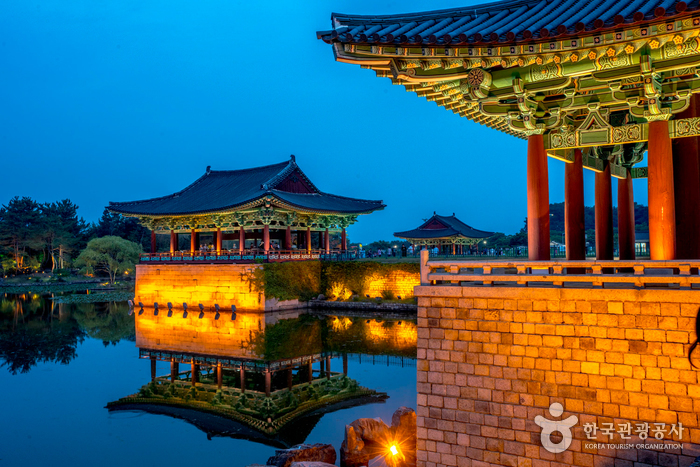
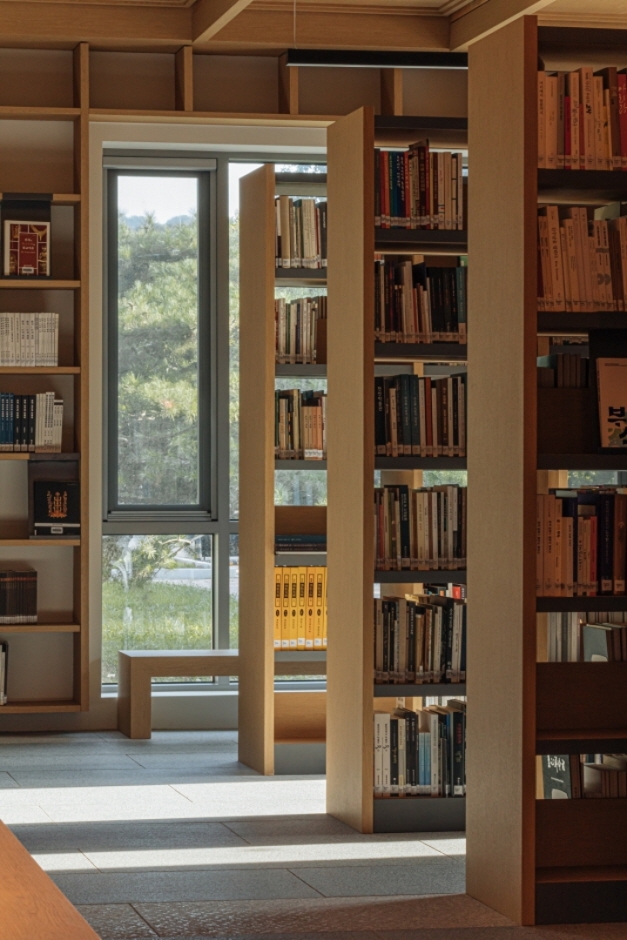
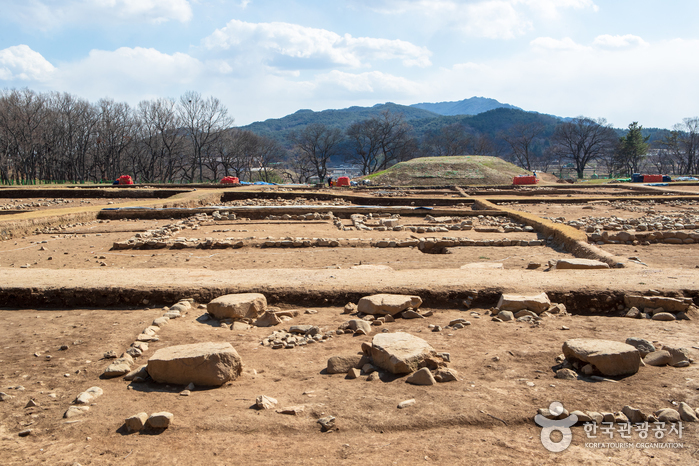
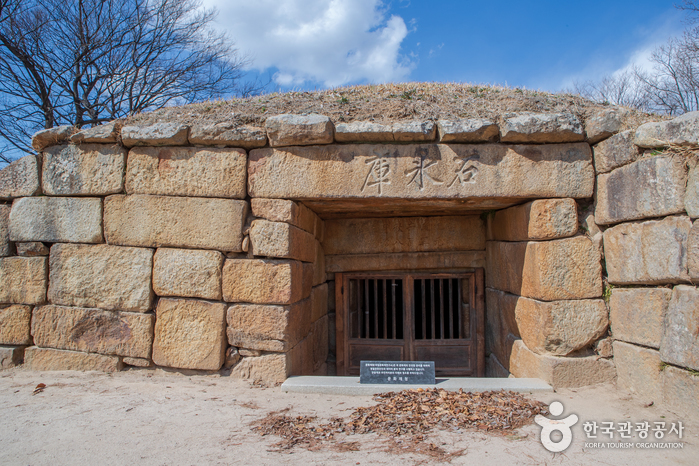
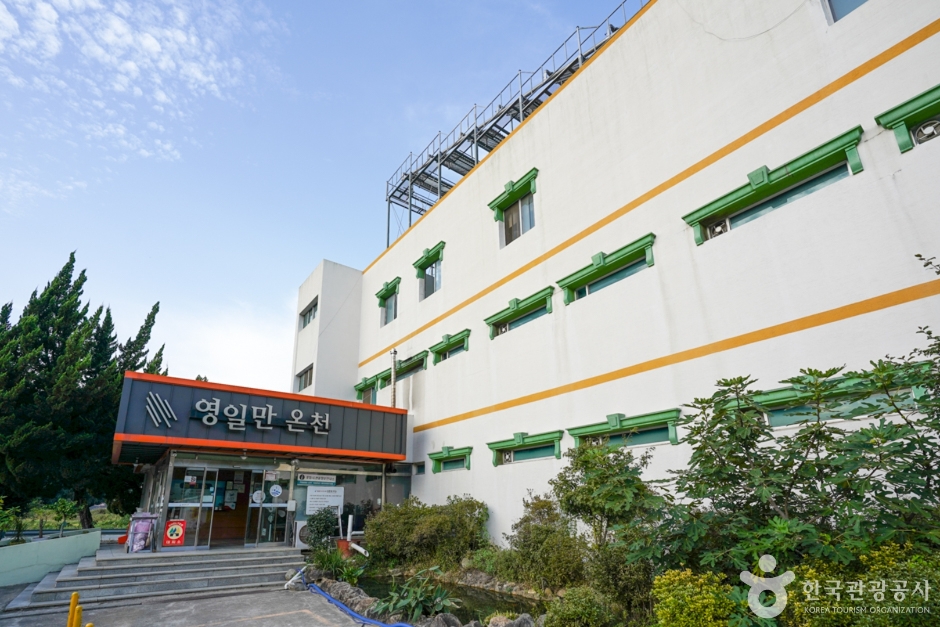

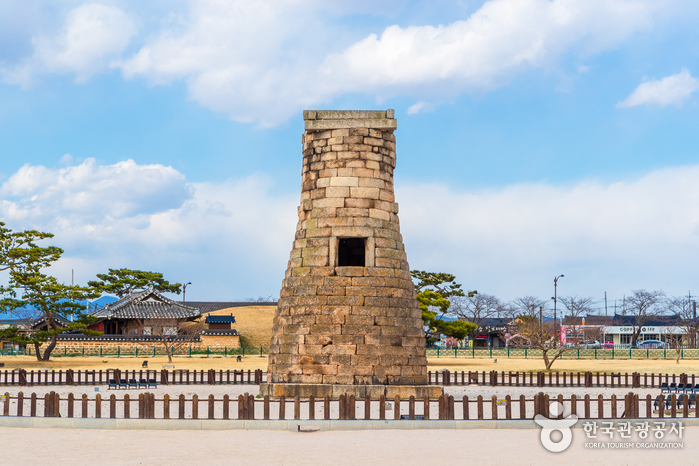
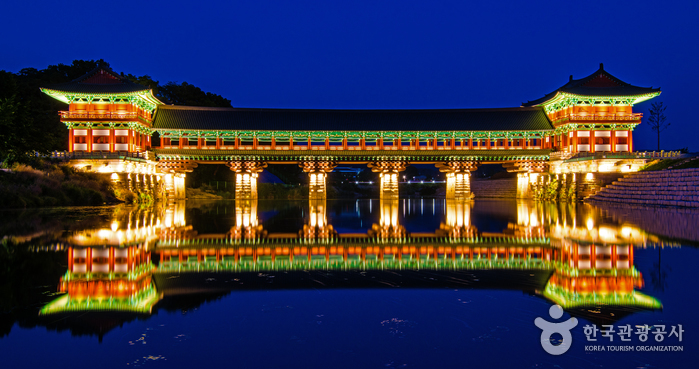
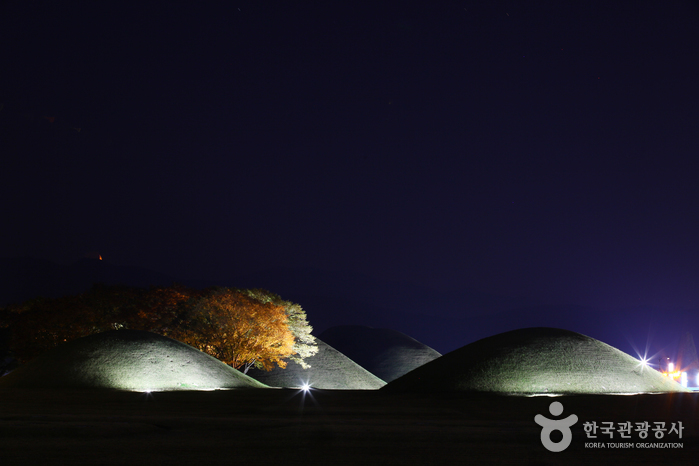
 Español
Español
 한국어
한국어 English
English 日本語
日本語 中文(简体)
中文(简体) Deutsch
Deutsch Français
Français Русский
Русский